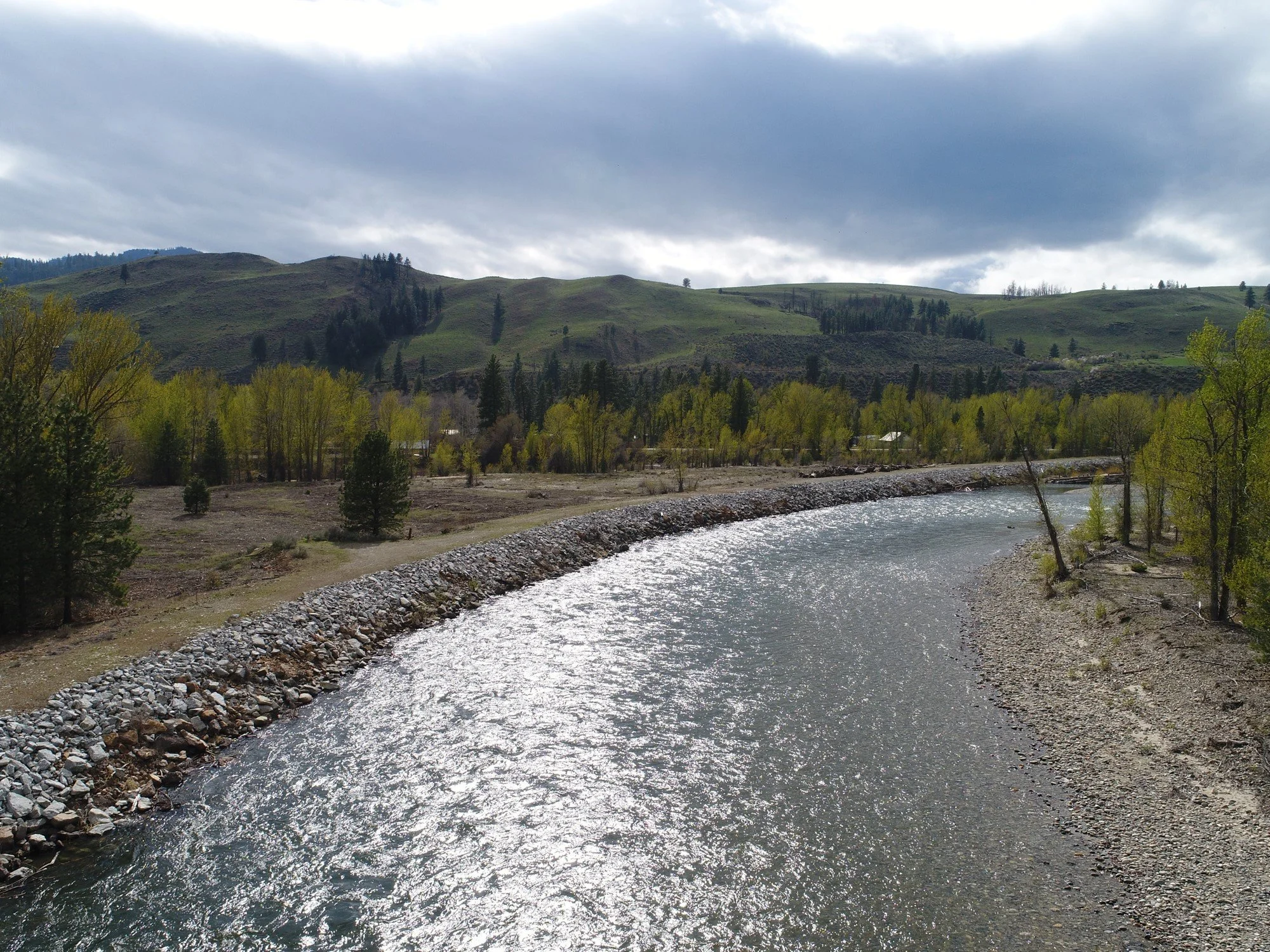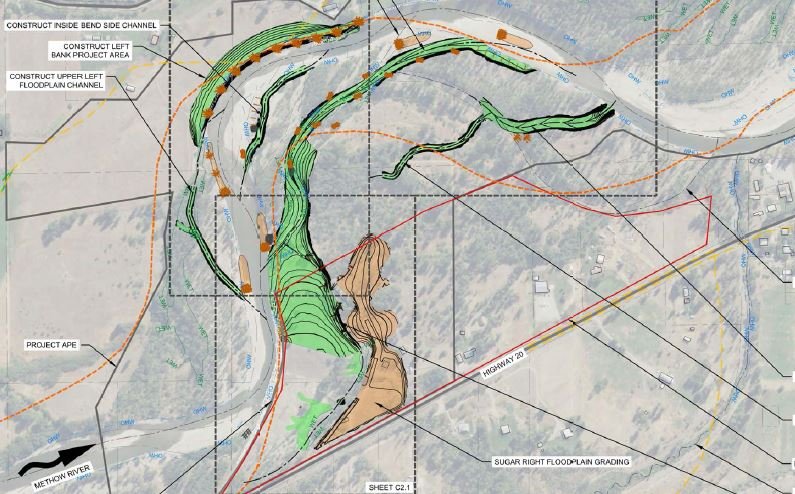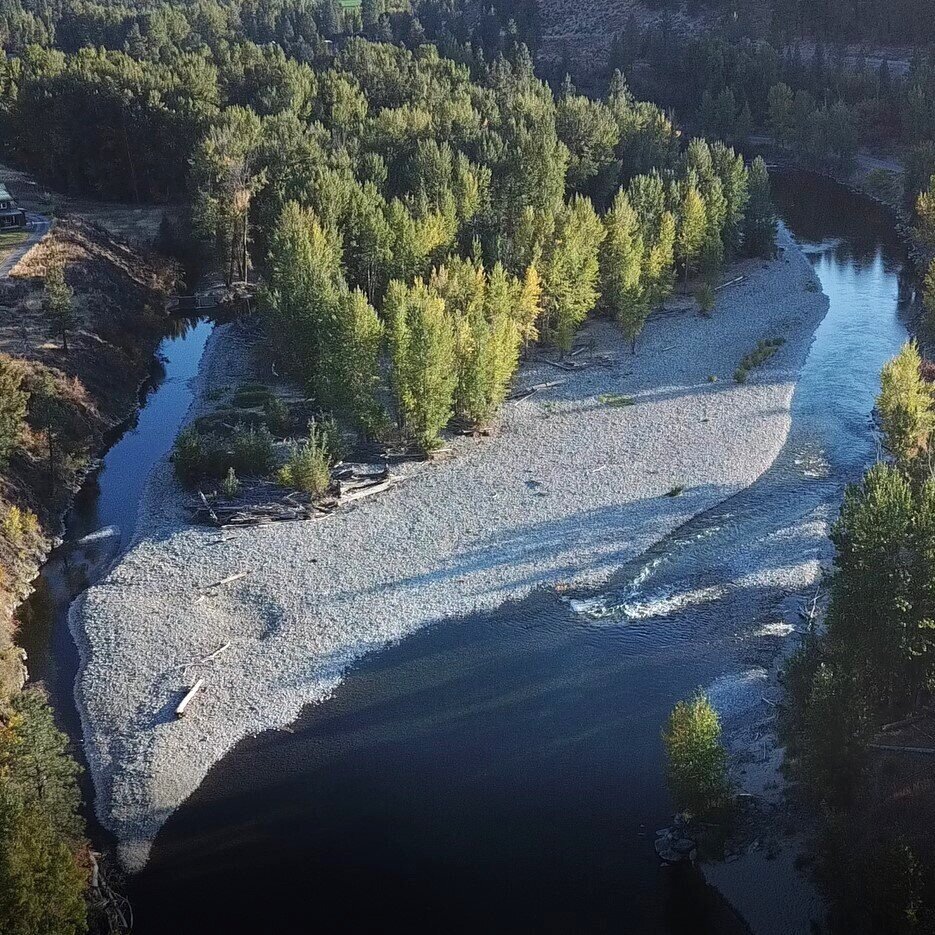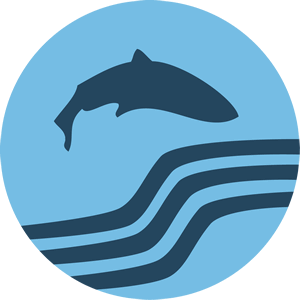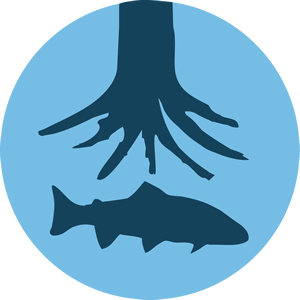Sugar Worksite
Work at the Sugar Project worksite will occur in two phases. The first phase of construction will start in early September 2025. Large wood has been delivered to the project site for phase 1 construction. The second phase of construction will start in summer 2026.
Where is this project?
The Sugar Worksite is located on the Methow River just north of the Twisp River Confluence. The project area includes both sides of the river and bed lands controlled by WA Department of Natural Resources. Work outside the active river channel includes property owned by Methow Salmon, Okanogan County, Town of Twisp and privately-owned lands. All work on private land is done with the support of the landowners under a landowner agreement.
Why is this project being constructed?
Historically, the river migrated side to side across the entire valley floor, and the alignment of the river was continuously changing. This movement would create important habitat for salmon, including floodplain areas, side channels and wood accumulations. Restoring habitat for steelhead and spring Chinook within the Methow River between Twisp and Winthrop has been identified as a high priority in the Upper Columbia Biological Strategy.
The project will address the highest priority ecological concerns identified within the reach including:
Increased quantity and availability of floodplain and side channel habitats
Increase instream channel complexity
Increase the quantity of native riparian buffer
Reduce impact of anthropogenic barriers
Location of Sugar worksite relative to local landmarks
What will this project do to address ecological concerns and improve fish habitat?
Phase 1 (SEPTEMBER - October, 2025):
Overview of Sugar Phase 1 work elements. Blue shows Methow River with arrow indicating direction of flow. Areas of excavations are displayed in green. The locations of wood structures are shown with wood icons.
Channel Grading to increase seasonal side channel connectivity
Excavation within existing floodplain channel inlets will increase how often and how much water flows into the channels. These channels are currently dry until a very high flow (5-year flow, 15,000cfs). When the project is completed these channels will have flowing water in them each year March through July (1500-2500cfs). Four channel inlets will merge to a single outlet. This means that if one or more channel entrance was blocked, water would continue to flow into the remaining channels. It is also possible that new floodplain channels would form as the river adapts.
Engineered logjams and other wood placements to increase complexity
Wood structures wood structures will be placed along the edges of the floodplain channels. Some wood structures are designed to encourage flow into the floodplain channel, but most wood structures of designed to mimic naturally occurring wood accumulations and provide habitat for endangered salmon.
Planting of native riparian species
A restored riparian will increase instream shading, replenish the large wood cycle and re-establish more naturally moderated channel migration rates
Phase 2 (July - October, 2026)
Overview of Sugar Phase 2 work elements. Areas of excavation are displayed in green, area of fill in tan. The locations of wood structures are shown with wood icons.
Floodplain Grading and Levee Modification TO INCREASE FLOODPLAIN AND CHANNEL CONNECTIVITY
The Sugar levee was constructed following the 1972 flood event to provide improved flood protection to select downstream properties after the pre-1970s protection feature was breached during this flood event. The levee construction significantly reduced floodplain capacity and realigned the river to create an over sharpened meander bend. Methow Salmon, in partnership with Okanogan County and Army Corps of Engineers worked with an engineering to identify how the levee could be changed to improve floodplain and channel connectivity while still maintaining needed protections. This project will remove the downstream portion of the levee and lower the adjacent floodplain.
channel grading to increase side channel connectivity
Excavation of existing season channels will increase how often and how much water is flowing in these channels. Currently, most of these channels only have water in them at high flows. The largest of these channels has water in it March through July. This project will encourage year round flow into the channel.
Engineered logjams and other wood placements to increase complexity
Wood structures wood structures will be placed along the edges of the floodplain channels. Some wood structures are designed to encourage flow into the floodplain channel, but most wood structures of designed to mimic naturally occurring wood accumulations and provide habitat for endangered salmon.
Planting of native riparian species
A restored riparian will increase instream shading, replenish the large wood cycle and re-establish more naturally moderated channel migration rates
When will this project be constructed?
Work at the Sugar worksite will be completed in two phases. This first phase of construction will start in late August 2025 and will focus on the southern portion of the project. The second phase of construction of the northern half will start in summer 2026.
Generally, work within the Methow River is limited to the month of July in each year to protect fish species, but special exemptions will allow this work in late summer and early fall to take advantage of low flow conditions.
Who is doing this project?
This project was developed by the Methow Salmon Recovery Foundation in coordination with a multi-agency Project Development Team, landowners and project partners. Bureau of Reclamation, Bonneville Power Administration, Salmon Recovery Funding Board, and Ecology Floodplains by Design provided funding and technical support for project design. Project construction will be funded by Bonneville Power Administration, Salmon Recovery Funding Board, Ecology Floodplain by Design, Rock Island Habitat Conservation Plan Tributary Committee, and Priest Rapids Coordinating Committee.
Hurst Construction, a crew based out of Wenatchee will construct phase 1. Plantings will be completed by Methow Natives, a restoration expert and local supplier of native plants. Methow Salmon plans to solicit contractor bids for phase 2 construction in October 2025. Methow Salmon prioritizes working with local and regional contractors. Contractors are encouraged to contact us to be placed on our contractor list.
